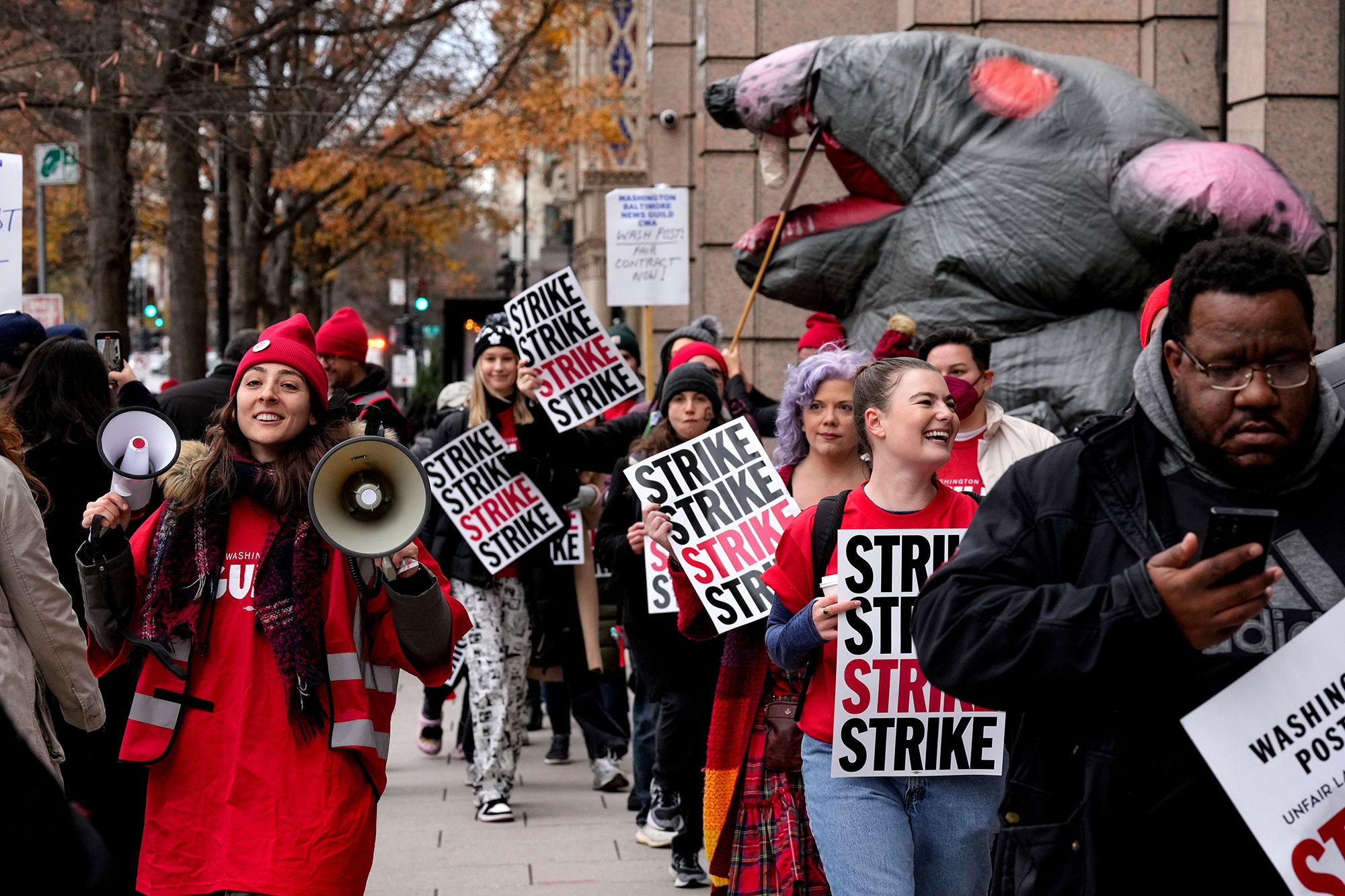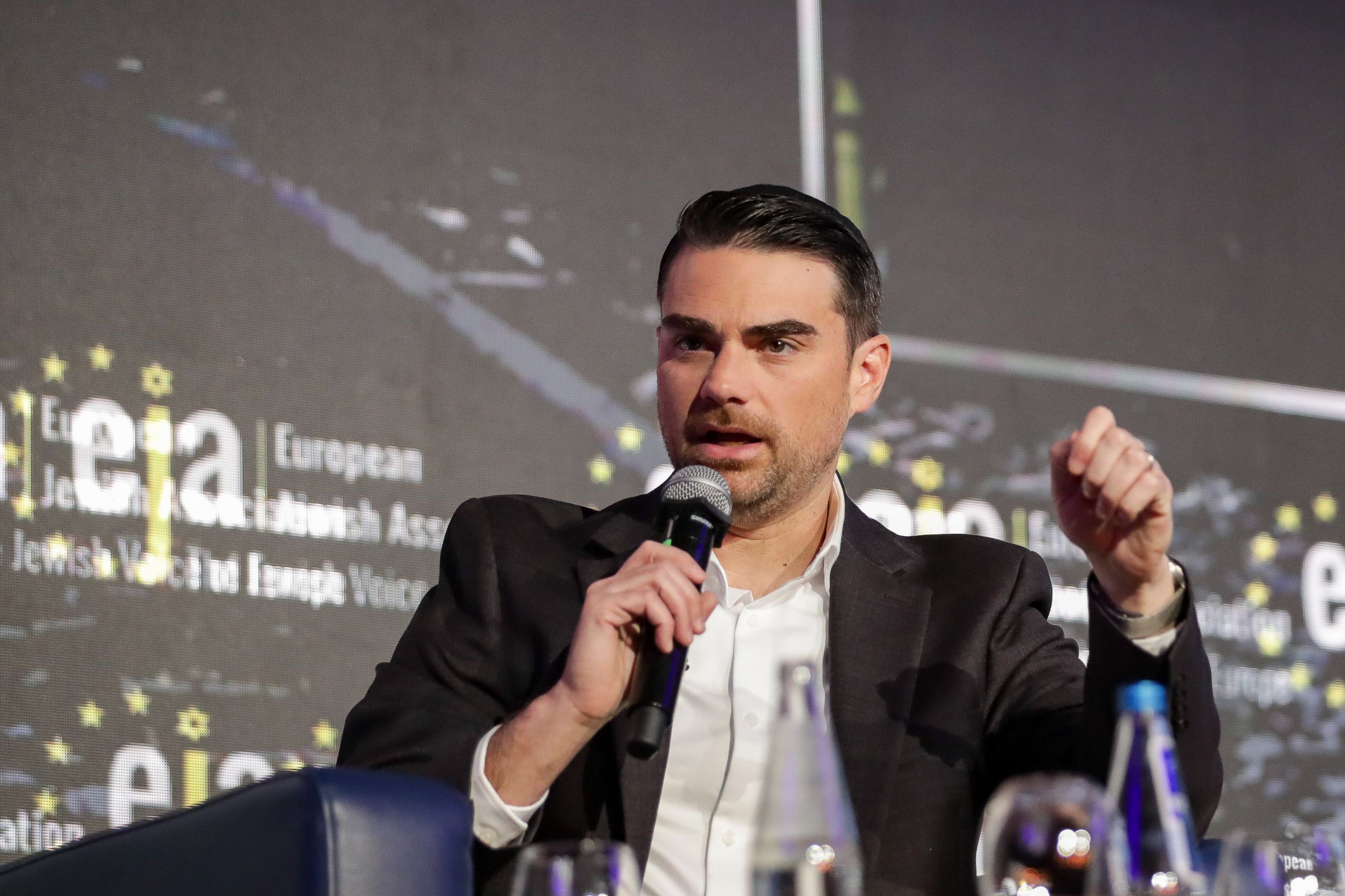“La gente está asqueada”: Por qué el personal de The Washington Post se retiró | Vanity Fair

Por Charlotte Klein
Más de 700 empleados de The Washington Post se declararon en huelga el jueves, una histórica interrupción del trabajo para protestar por las negociaciones estancadas del contrato sindical y, para algunos, para expresar quejas de liderazgo más amplias. "Hay mucha angustia por muchas cosas", me dijo un empleado de The Post.
La huelga de 24 horas, algo que no ha ocurrido en el periódico desde la década de 1970, según líderes del Sindicato de The Post, comenzó a medianoche del jueves. La huelga es "en protesta por los esfuerzos de la empresa para negociar de mala fe" y "poner fin unilateralmente a las negociaciones sobre el contrato, y con las salidas voluntarias que se anunciaron a principios de este año", dijo la reportera sobre el clima de The Post, Sarah Kaplan. "Esto es una declaración por parte de cientos de empleados de The Washington Post diciendo que la empresa tiene que trabajar con nosotros de manera justa" y "respetar el hecho de que esta organización de noticias no funciona sin todos nosotros". Se erigió una línea de piquete fuera de la sede del periódico en Washington, donde el personal participante, organizándose en turnos, comenzó a manifestarse temprano en la mañana.
Este contenido también se puede ver en el sitio de origen.
"Hecho: Jeff Bezos compró nuestro periódico hace una década", dijo Katie Mettler, una reportera de Metro y copresidenta de The Post Guild durante una manifestación por la tarde en la línea de piquetes. "Hecho: Nos compró esperando que empatáramos o fuéramos rentables. Hecho: Nos volvimos rentables. Hicimos nuestro trabajo. Cumplimos nuestras metas. Y luego nuestro exdirector Fred Ryan", provocando abucheos de la multitud, "derrochó nuestras ganancias, y ahora estamos aquí, siendo responsabilizados por los errores de la compañía. Y no creo que eso sea justo. No creo que debamos llevar la carga de su mala gestión". Mettler continuó: "Fred Ryan tenía un jefe y era Jeff Bezos, así que creo que es razonable pedirle cuentas... él tiene el poder de instruir a las personas que actualmente dirigen esta empresa... para que vuelvan a la mesa de negociaciones".
The Post Guild, el sindicato de empleados, ha estado negociando con la empresa durante 18 meses. En ese tiempo, Ryan dejó su cargo, Bezos nombró a Patty Stonesifer, exejecutiva de Microsoft y confidente de toda la vida, como CEO interina, y Stonesifer nombró a Will Lewis, exCEO de Dow Jones, la empresa matriz de The Wall Street Journal, como próximo director del periódico. Las dificultades comerciales de The Post también se han vuelto evidentes en ese tiempo, con The New York Times informando que el periódico estaba en camino de perder $100 millones este año, y, a mediados de octubre, The Post ofreciendo salidas voluntarias a 240 empleados de su personal.
Sin embargo, la semana pasada, Stonesifer les dijo a los empleados que podrían ser necesarios "despidos involuntarios" para alcanzar la meta de 240 aceptaciones en el paquete de separación, que, en ese momento, solo habían aceptado 120 empleados. Inicialmente, la empresa puso límites a cada equipo al que ofrecieron salidas voluntarias, lo que significa que solo aceptarían salidas voluntarias en determinado equipo hasta ese límite, pero Stonesifer en su memo de la semana pasada dijo que "considerarían aumentar los límites donde podamos minimizar el impacto en nuestra misión y producto". Mientras tanto, los empleados han buscado claridad sobre la estrategia a largo plazo, como informé anteriormente, tanto en términos comerciales como editorialmente. "La gente está disgustada con las acciones de la empresa. Tanto en términos de las salidas voluntarias simuladas, que en realidad son despidos, como en la falta de avances en un contrato razonable", dijo el empleado de The Post.
El Sindicato está pidiendo aumentos salariales del 4% al año durante tres años, mientras que la empresa ofrece un 2.25% para el primer año del contrato y un 2% los siguientes dos. "Merecemos un contrato que tenga protecciones de seguridad laboral y que respete la antigüedad y el valor de los empleados que han dedicado décadas de sus vidas a esta compañía", dijo Kaplan. "Merecemos un proceso de salida voluntaria que sea justo y verdaderamente voluntario, y que no sea engañosamente un trato peor de lo que la empresa asegura. Y, sobre todo, merecemos ser tratados de manera justa por nuestro empleador".
"Respetamos los derechos de nuestros colegas cubiertos por The Guild de participar en esta huelga planificada de un día. Nos aseguraremos de que nuestros lectores y clientes se vean afectados lo menos posible", dijo un portavoz de The Post en un comunicado. "El objetivo de The Post sigue siendo el mismo desde el inicio de nuestras negociaciones: llegar a un acuerdo con The Guild que satisfaga las necesidades de nuestros empleados y las necesidades de nuestro negocio".
With hundreds of staffers pledging support for the walkout earlier this week, a second Post staffer said “it’s going to be noticeable,” but questioned “whether it’s going to be effective.” In some cases, entire departments, such as the Metro and investigative teams, committed to walking out, Post reporter Marissa Lang said, as did “colleagues on the commercial side, and in the print plant,” who walked off their jobs in the early hours of Thursday morning. “A walkout of 750 people touches every part of the Washington Post organization,” said Lang. Earlier this week, Post Guild released an open letter asking readers to “respect our walkout by not crossing the picket line,” meaning “do not engage with any Washington Post content.” If you did read the Post on Thursday, though, you may have noticed some stories—like one about a new crime center in DC to the paper’s own coverage of its labor protest —had a general byline: “By Washington Post Staff.” Either reporters had their names stripped off stories, or the generically bylined pieces were written by editors.
Staffers I spoke to had mixed feelings about how much this action will really do. “I think people are genuinely impressed by how this young contention of leaders has revived the union, and doubled its membership,” said a third Post staffer. But “a lot of the same people are disappointed to see that they’re acting out in this way that doesn't seem to be connected to any real prospect of progress on pay of jobs.” I’m told that there was internal second-guessing on Thursday among reporters who’d agreed to walk out but were now wondering, among other things, what would come next. Some high-profile staffers signed onto the strike out of fear of being publicly called out if they didn’t participate, according to a Post staffer. A piece in Semafor did just that to two top New York Times reporters, Peter Baker and Michael Shear, last year when the two opted out of the Gray Lady union’s walkout—an article, the Post staffer said, that had been circulating in recent days.
Asked about the Guild’s plan following the strike, Lang said they would “extend another one-day invitation to the company to sit down with us and meaningfully bargain over the terms of our contract. If they refuse and continue to engage in some of the behavior we’ve seen, we’re prepared to continue to pressure them,” she said.
The Post Guild’s decision to walk off the job amid lagging contract negotiations comes nearly one year to the day that the Times’s unionized staffers rallied outside the newspaper’s headquarters in their own historic act of protest. Several months later, the Times’s bitter labor fight came to an end as the staff union and company agreed to a contract. In August, Axios reported that members of the Times union briefed staffers from the Post union as the Post considered a walkout of its own.
There are distinctions between the staff appeals at the two papers. Part of the Times union’s rallying call last year was tied to the company having increased compensation for some top officers and increased its dividend payout to shareholders. The Post’s walkout, on the other hand, comes as the company has admitted it’s been operating on faulty financial projections and is buying out—or, potentially, laying off—about 10% of its workforce. While one Post staffer acknowledged its New York–based rival is on firmer financial footing these days, they also pointed out the Times is “not owned by the second richest guy in the world.”




